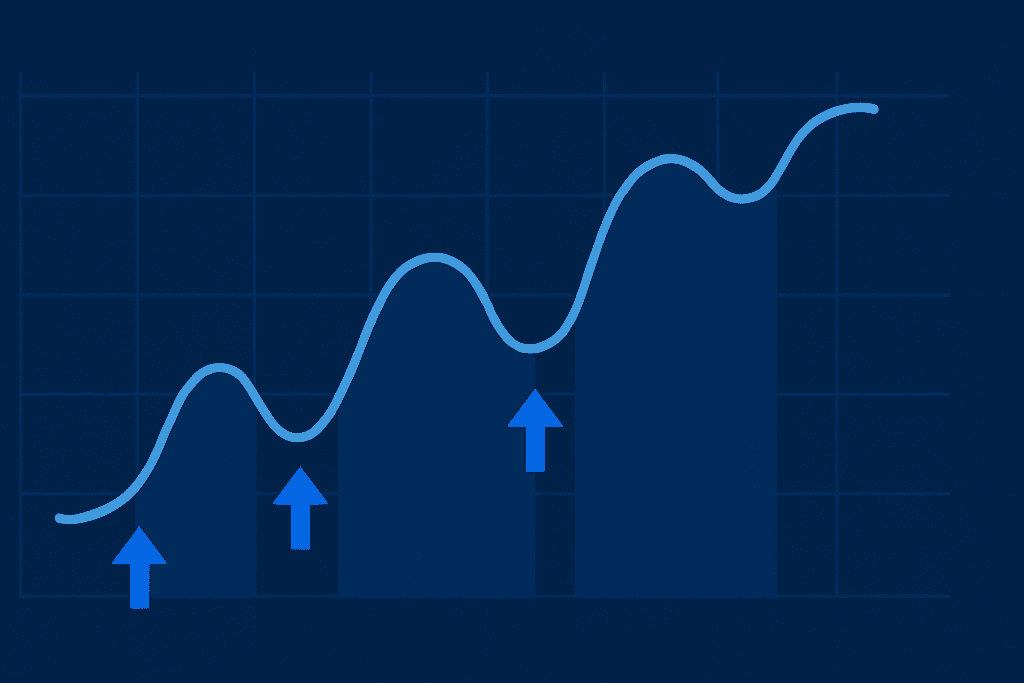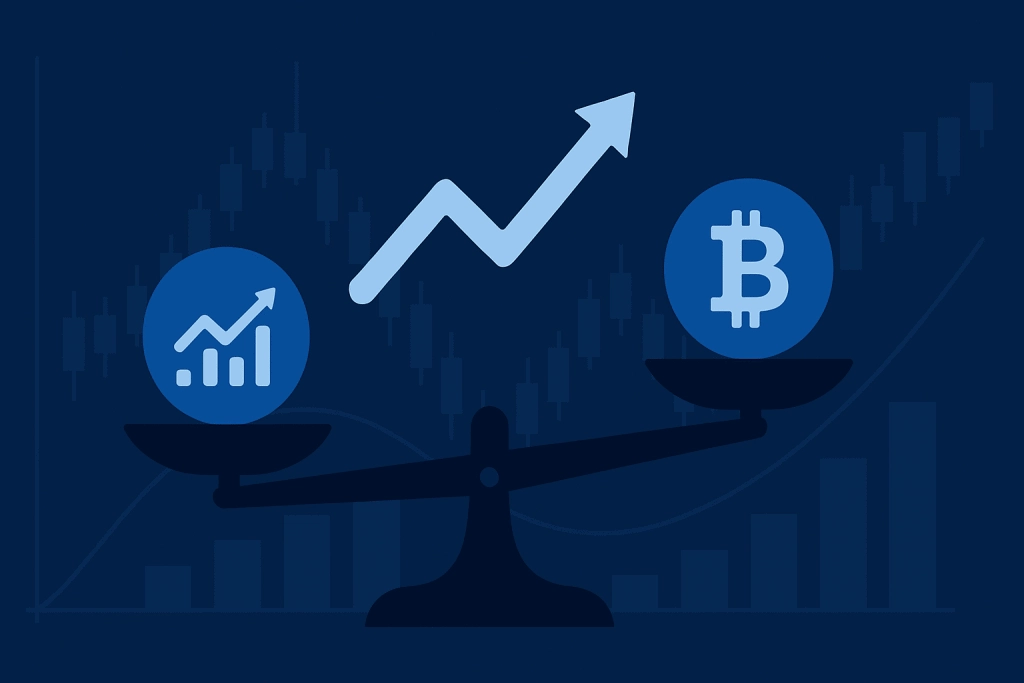If you’ve ever wondered how traders profit from market moves without being glued to their screens all day, the answer often lies in short- to medium-term trading strategies. One of the most popular approaches is known as swing trading, a method designed to capture price fluctuations that unfold over several days or weeks.
Understanding this concept is important because it provides a balance between the intensity of day trading and the patience required for long-term investing. For anyone curious about participating in financial markets—whether in stocks, forex, or crypto—grasping how this style works can unlock new opportunities.
What is swing trading

In simple terms, this approach is about capturing price “swings”—movements that occur over days or weeks. Traders identify potential entry points when an asset begins moving upward or downward and then hold positions just long enough to ride that wave.
Other terms you might see include position trading (a longer-term cousin) or momentum trading (a style within this category). While definitions vary, they all point to the same goal: profiting from predictable movements within shorter time frames.
Breaking Down swing trading

To fully understand this strategy, let’s break it into three essential components: timing, tools, and psychology.
Timing the Market
Unlike day traders, who close positions within hours, and investors, who may hold for years, this method targets the “middle ground.” Trades are usually kept open for several days, sometimes weeks, depending on how long the trend lasts.
Tools of the Trade
Technical analysis is at the heart of this style. Common tools include moving averages to track direction, RSI (Relative Strength Index) to spot overbought or oversold conditions, and MACD (Moving Average Convergence Divergence) to confirm shifts in momentum
Psychology and Discipline
Successful practitioners emphasize patience. For example, if you buy a stock at $50 expecting it to climb to $60, you need the discipline to stay in the trade through small pullbacks rather than selling too early.
Example: Imagine a stock trending upward. It rises to $100, dips to $95, then bounces back. A trader might buy at $96 and aim to sell at $105 within a week. This isn’t about holding forever—it’s about catching a portion of the movement.
History of Swing Trading
Ultimately, this style of trading is about balancing patience with precision—holding long enough to profit, but not so long that the opportunity vanishes.
The practice of capturing medium-term price movements dates back nearly a century. Traders used manual charting and early forms of technical analysis to time entries and exits.
| Period | Development |
|---|---|
| 1920s–1940s | Early chart-based strategies pioneered by Charles Dow and others. |
| 1970s–1990s | Popularized with the rise of technical indicators and software. |
| 2000s | Online brokers made access easier for retail traders. |
| 2010s–2020s | Expanded into forex, crypto, and global markets. |
Types of swing trading
There are several variations of swing trading, each suited to different trader personalities.
Trend Trading
In an uptrend, they buy during short-term dips, aiming to profit when the price resumes its climb. In a downtrend, they do the opposite—selling rallies with the expectation that prices will continue falling. The key advantage of this strategy is its simplicity: traders align themselves with the broader momentum rather than fighting it.
Counter-Trend Trading
This strategy involves betting against the dominant direction of the market, anticipating temporary pullbacks or corrections. For example, if a stock has been rallying for weeks, a counter-trend trader may short it, expecting a short-term decline before the uptrend continues.
Breakout Trading
Breakout trading focuses on key support and resistance levels. Traders watch for assets that have been consolidating within a defined range, waiting for the moment when price bursts through either barrier. A breakout above resistance may signal strong bullish momentum, while a breakdown below support suggests a bearish move. This style is popular because breakouts often lead to large, fast price swings, offering quick opportunities. The challenge lies in avoiding false breakouts—when the price briefly moves past a level but fails to sustain momentum.
Range Trading
Range trading thrives in these conditions, as traders buy at support . This back-and-forth method can be very effective when price patterns are stable and predictable. Range traders often combine candlestick analysis, oscillators like RSI, and volume data to refine entries and exits. The main drawback is that when markets eventually break out of the range, positions can quickly turn against traders who don’t adapt.
How does swing trading work?
Swing traders typically scan the market for setups using technical indicators. Once they identify a candidate, they determine entry and exit points, set stop-loss orders, and monitor the trade. Unlike day traders, they don’t need to be glued to the screen but must check markets daily.
Pros & Cons
Before diving in, consider both sides of what is swing trading:
| Pros | Cons |
|---|---|
| Less stressful than day trading | Overnight risks from news or events |
| Fits part-time traders | Requires patience and discipline |
| Works in multiple markets (stocks, forex, crypto) | Losses can add up if trends reverse |
| More frequent opportunities than investing | Fees and spreads may cut into profits |
Uses of swing trading

The practical uses of what is swing trading vary across markets and industries. Here’s how it plays out in real life:
Stocks
Swing trading is commonly applied in the equities market, where traders aim to capture price swings driven by earnings reports, news events, or technical chart patterns. Unlike day trading, which requires constant monitoring, swing trading in stocks allows traders to benefit from short- to medium-term trends while still holding positions long enough to capture meaningful price changes.
Crypto
Cryptocurrencies are known for their extreme volatility, making them a natural fit for swing traders. However, the risks are also amplified because digital assets can move unpredictably on news, regulations, or even a single tweet. Successful swing traders in crypto often combine technical analysis with strict risk management, setting stop-losses to protect themselves from sudden downturns.
Profitability Focus
Traders use this approach across multiple asset classes, from equities and crypto to commodities and forex. The key is adaptability: some traders focus on a few high-conviction setups, while others spread strategies across markets depending on volatility and timing. Swing trading doesn’t demand sitting in front of a screen all day, which makes it appealing for people balancing trading with other responsibilities.
Conclusion
In the end, swing trading is about more than chasing price movements—it’s about reading market behavior, planning with intention, and taking advantage of opportunities when they arise. For traders willing to practice patience and strategy, it can be a powerful path toward building skill and confidence in the markets.
Resources
- Investopedia: Swing Trading Guide
- Forbes: Swing Trading Analysis
- Investing: Swing Trading Tactics
- Outlook India. Swing Trading Strategies
- TMGM Academy: Swing Trading Stocks
